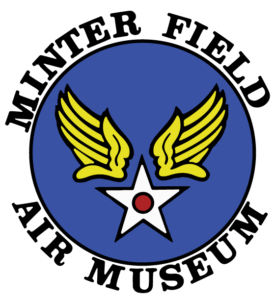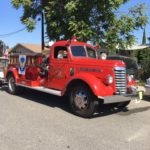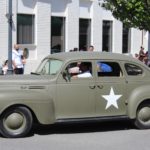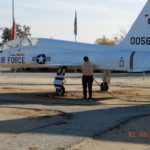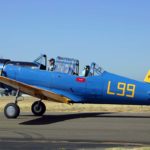Welcome To The Museum
Statement of Purpose:
To educate the public about Minter Army Air Field and Kern County aviation’s impact on local, regional, and global history.
Through preservation efforts, specialty presentations, and community outreach programs.
The Museum houses artifacts and photographs of the men and women who were stationed here as well as other military eras. Artifacts include military uniforms, radio equipment, a Link Trainer, a Norden Bomb Sight; Medals and Patches, Echelons (Class Books), Snap Roll Newsletters, hundreds of photographs and documents, and beautiful aviation art.
The Museum is working on 1 helicopters for display; an OH-6 LOACH, once used for reconnaissance in Vietnam.
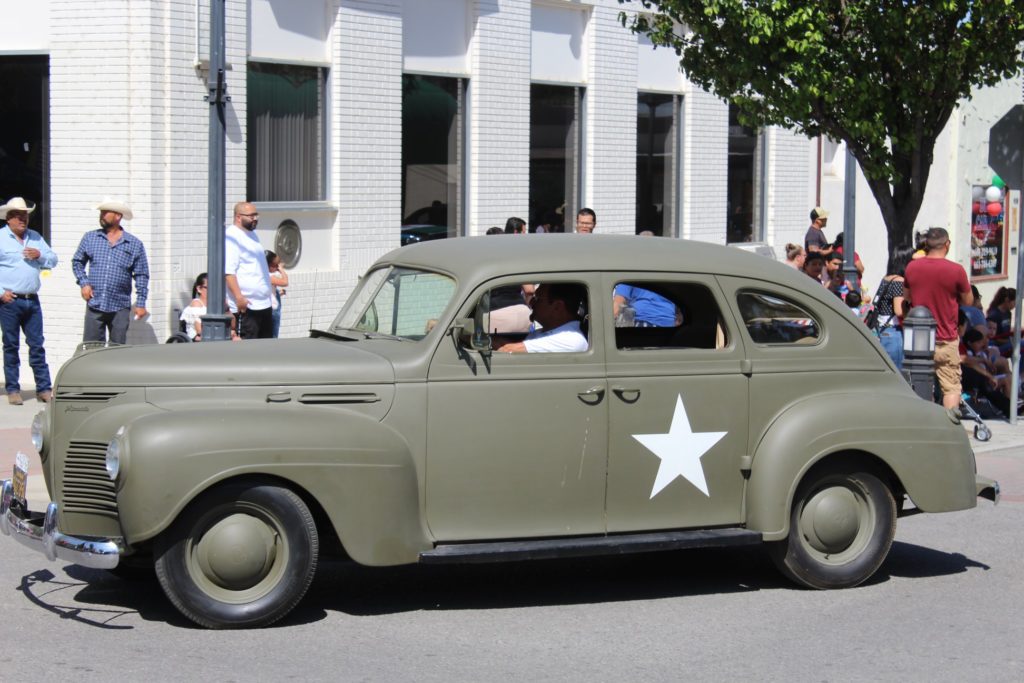
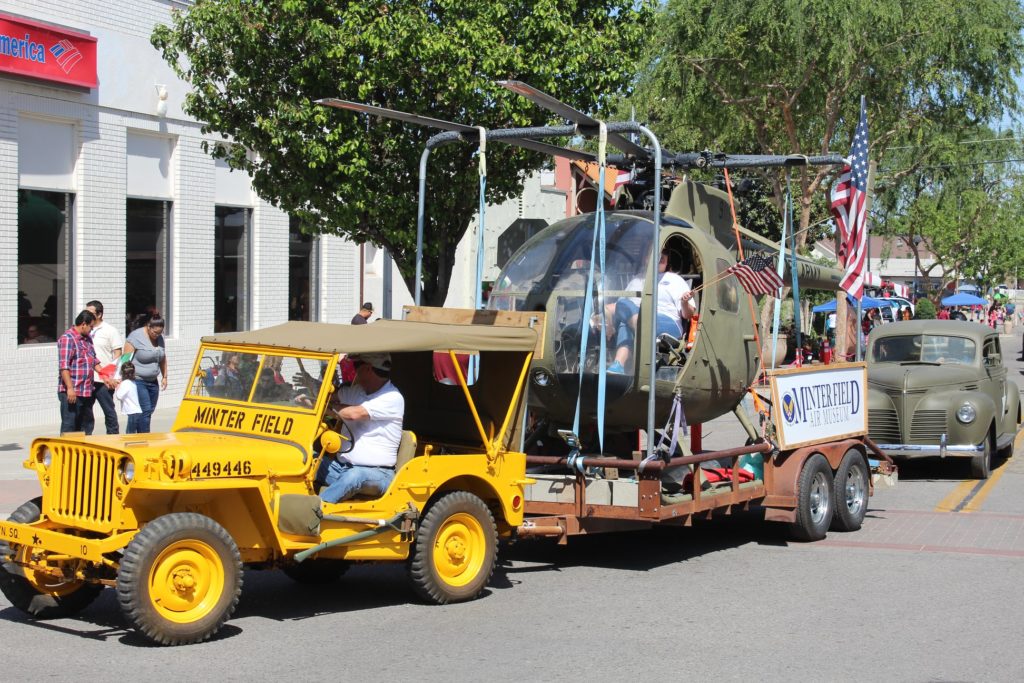
Inside the Museum is a nearly completed Link Trainer. We are also renovating an original 1945 Minter Field GMC fire truck to go along with the 2 operational jeeps: a Ford and a yellow Willys “Follow Me”, plus an original 1940s era Plymouth Staff car that was stationed at Gardner Field in Taft, CA.
The Museum features a wonderful collection of models of aircraft and military vehicles. There are several recreations of historic aircraft, ships, and even a German Railroad cannon. There are several displays of local people who made historical contributions, especially during WW I and WW II.
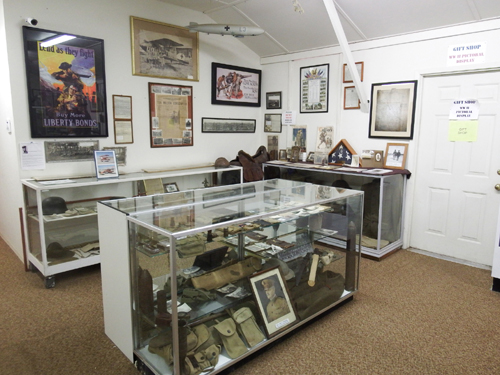
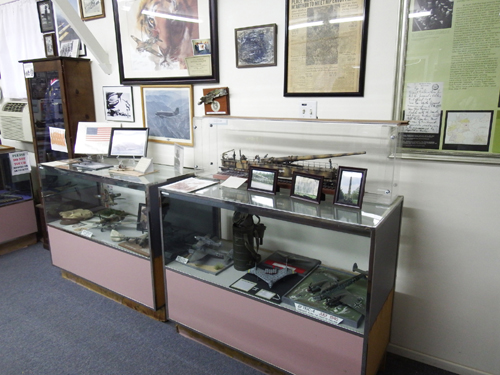
The Museum has a new database of over 11,500 names of cadets and staff who were at Minter Field. Many include pictures in class books. There is also a DVD library of over 900 hours of military and aviation videos, cataloged by subject and names.
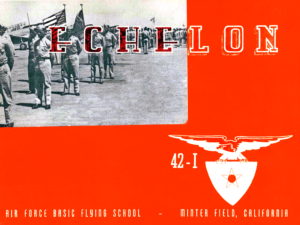
Minter Field is base for many flying WWII aircraft, including Stearmans, Aeroncas, Stinsons, North American AT-6s, and a P-51 Mustang. Minter Field is the home of Reno Air Race Champions Bill “Tiger” Destefani and his P-51 “Strega”, 8 time Reno winner Eddie Van Fossen who flew the AT-6 “Miss T-N-T”, and was the home base of the late Al Goss, Reno AT-6 winner in 2004. The field is known for many restoration companies who specialize in Warbirds and Antiques.
History of Minter Field Air Base
The Museum is housed in the original fire station, built at Minter Field in 1941. It is the last examples of this architecture left on the field. The base was a major basic training facility where nearly 12,000 pilots received basic training in BT-13s, UC-78’s, AT-6s, P-38s and B-25s. Over 7,000 personnel manned the field, both military and civilians. The field had a WASP contingent of as many as 17 female pilots who flew as test pilots.
Although officially dedicated on Saturday, February 7, 1942, operations on Minter Field actually began in June of 1941 when the post was garrisoned by only a small guard unit. The base commander, Colonel Carl Pyle, established his headquarters on the Bakersfield Junior College campus in the city while base personnel camped out in temporary quarters scattered from Bakersfield to Wasco, located some fifteen miles to the northwest of Minter Field.
By early August, 1941, multiple units began moving onto the field as construction of wooden buildings accelerated. In the beginning, the airport was known as Lerdo Field because of its close proximity to the highway of the same name. In October of 1941, the Minter Sub-Depot was established as a branch of the Sacramento Air Depot.
The field was named in honor of First Lieutenant Hugh C. Minter, a member of the locally prominent Minter family. The Lieutenant, a WWI veteran, was killed in a mid-air collision over March Field in July, 1932. Members of the Minter family are still active in the Museum today.
In April of 1942, contracts for the construction of more than 65 on-base buildings were let while the constantly increasing numbers of cadets were housed in a large tent city erected as temporary shelter. By July of 1942, Minter Field had become the largest training base of its type on the West Coast, with nine auxiliary landing fields located in Delano, Lost Hills, Dunlap, Pond, Wasco, Famosa, Semi-Tropic, and Minter No. 1 & No. 2. During the course of the War, more than 11,000 Army Air Corps Cadets graduated from Minter Field, deploying around the world to fly in all theaters of operations.
The principle training aircraft was the Consolidated Vultee Valiant, affectionately known as the “Vultee Vibrator”, powered by a 450 HP Pratt & Whitney Wasp R985 nine-cylinder radial. The aircraft had fixed gear and Hamilton-Standard two speed props.
Other training aircraft included the Cessna UC-78 Bobcat, also known as the “Bamboo Bomber” because of its extensive use of lightweight wood in the fuselage and wings. The Cessna was a twin-engine “Light Personnel Transport” and advanced trainer. Aircraft also seen on the field during WWII included the AT-6 Texan trainer, B-25 Mitchell twin-engine bomber, and P-38 Lightning, as well as other widely used fighter, bomber and observation craft.
The Gossamer Condor
The aircraft is preserved at the Smithsonian National Air and Space Museum (Wikipedia)
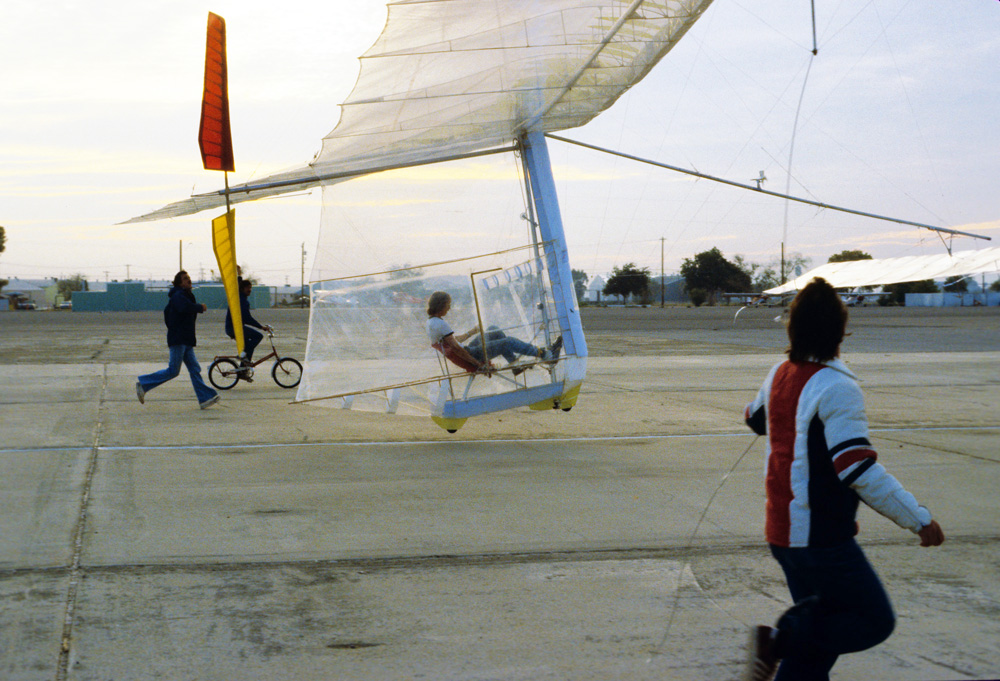
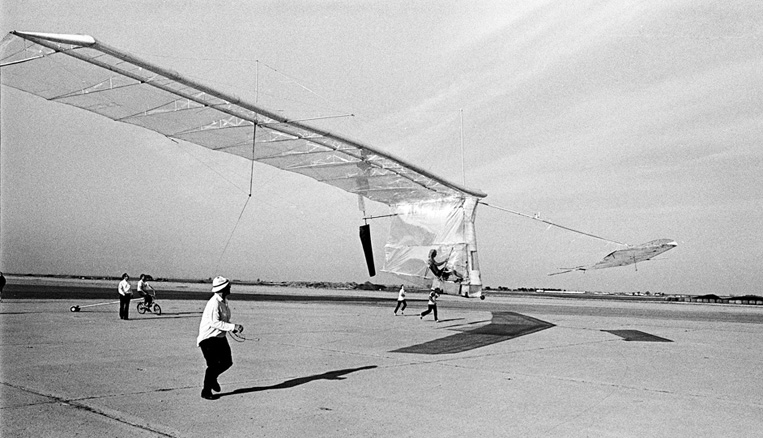
Visitor Info, Directions & Privacy Information
Minter Field Museum Hours: Friday & Saturday from 10am-2pm, or By Appointment – Call (661) 393-0291 (Please leave a message).
From Highway 99
Take the Lerdo Hwy Exit (Toward Shafter),
Go West 1 Mile to Minter Field (Turn North on Vultee Street for 3 blocks)
From I-5
Take the Lerdo Hwy Exit #268 (Toward Shafter)
Go East 20 Miles to Minter Field (Turn North on Vultee Street for 3 blocks)
